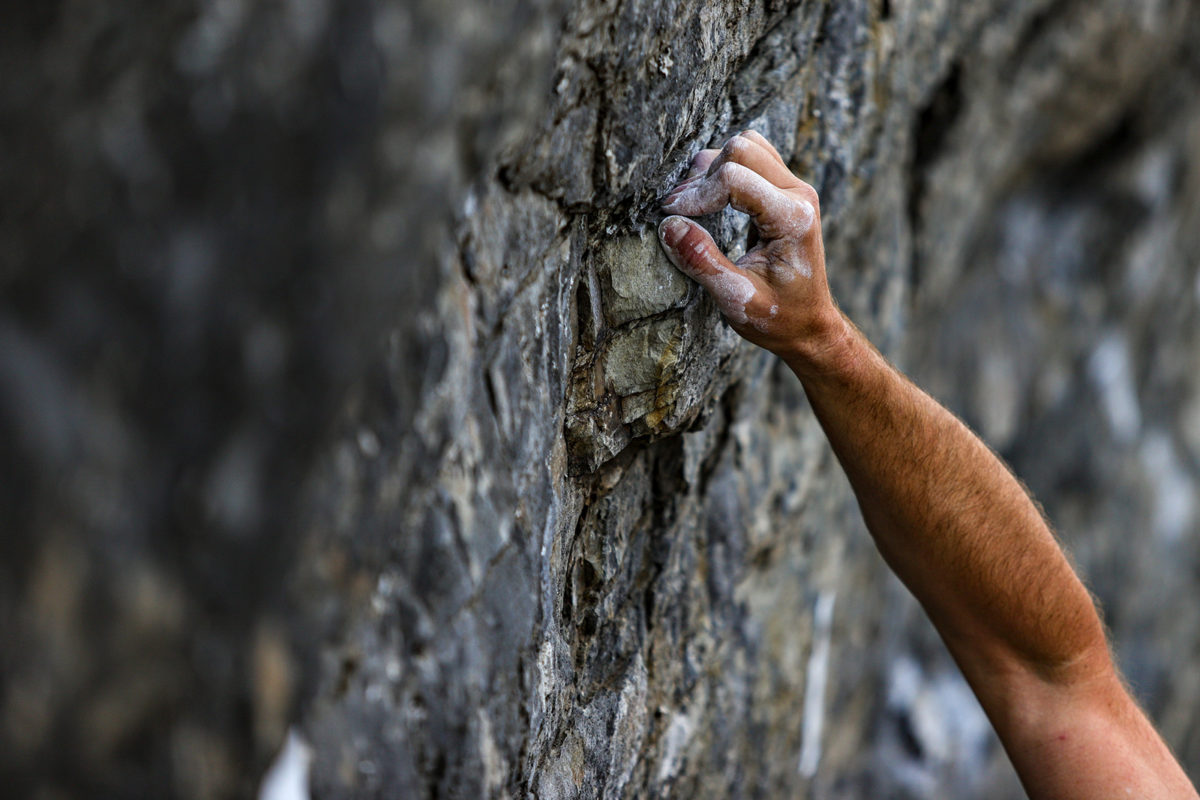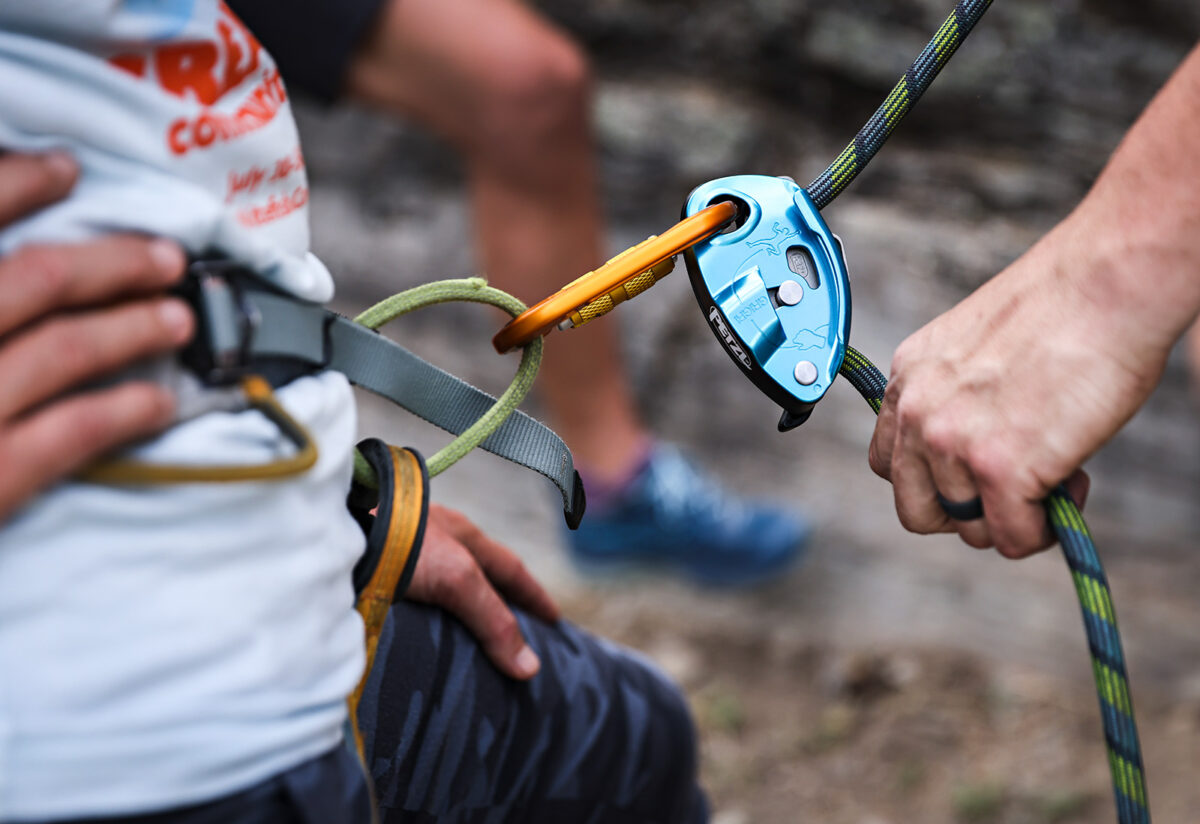Montana Climbers, Congressional Delegates Coalesce Against ‘Misguided’ Proposal to Restrict Fixed Anchors in Wilderness Areas
A new draft guidance policy by the U.S. Forest Service and National Park Service would classify standard climbing safety tools as prohibited ‘installations’ in federally managed wilderness
By Tristan Scott
Days after federal land managers closed the public comment period on a draft guidance document that would ban the use of most fixed climbing anchors in national parks and forests with wilderness designations, a bipartisan group of U.S. senators submitted a joint letter urging agency officials to maintain access to a safety apparatus that for decades has allowed vertical adventure-seekers to safely scale rocks and crags.
The Feb. 2 letter, whose authors include U.S. Sen. Steve Daines, R-Mont., comes in response to a draft guidance document proposed by the National Park Service (NPS) and U.S. Forest Service (USFS) to classify fixed anchors — the bolts, pitons, and slings that technical climbers use to ascend and descend technical faces — as prohibited “installations” in designated wilderness areas in the National Park System, as well as on national forest lands. The draft climbing management directives would designate all existing fixed anchors in wilderness areas as illegal until each anchor can be individually reviewed by their respective land management agencies.
Joining Daines in the appeal to NPS Director Chuck Sams and USFS Chief Randy Moore are Sens. John Hickenlooper, D-Colo.; Joe Manchin, D-W.Va.; and James Risch, R-Idaho. The letter implores the agencies to explicitly state that climbing activities are appropriate on public lands, and that fixed anchors on a pre-existing route are neither illegal to maintain nor to use to protect a climb, even if they are subject to pending analysis.
“Furthermore, we urge you to take steps to expedite reviews of fixed anchors and climbing routes as much as possible, ensure public notice regarding the status of such reviews, and increase opportunities for meaningful stakeholder engagement,” the letter states.
Although the USFS proposal affirms climbing as an acceptable use of public lands, including in designated wilderness areas, it aims to formally assess the use of fixed climbing equipment for activities including rock climbing, snow and ice climbing, mountaineering, canyoneering, and caving so that they align with the Wilderness Act, noting that “currently, national guidance is not in place regarding acceptable climbing practices on national forest and grasslands.”

NPS Director Sams explained that, while he shares “a lifelong love and appreciation of outdoor recreation sparked by a childhood spent exploring and enjoying the natural world,” he said “parks should evaluate all routes with existing fixed anchors when practicable, as funding and resources allow, through either a park, area, or route specific minimum requirements analysis.”
“The proposed guidance will help provide a consistent process for installing new or replacing existing fixed anchors in wilderness and ensure that we are managing these important areas for the benefit of current and future generations,” according to Sams.
Still, hundreds of climbers have expressed concern and skepticism about the proposal, saying that adding a regulatory layer of bureaucratic red tape would delay the maintenance and replacement of climbing anchors, prohibit their use, or force their removal, which is a point that the bipartisan group of senators shared.
“Analyzing each individual route and anchor nationwide would be excessive and would lead to long delays and a lack of certainty for the climbers that depend on them,” the senators’ letter continues. “The agencies should provide regular public updates on the status of any assessments of routes and anchors, as well as ample public notice for any proposed changes to existing routes. In rare cases where removal of anchors is advised, public notice or comment is essential to prevent significant danger to climbers who may have planned their route around those anchors.”
The 74-day public comment period on the draft guidance proposal closed on Jan. 30. It was originally slated to close on Jan. 16, but agency officials extended the period by two weeks to accommodate the groundswell of input, which totaled nearly 9,000 comments.
Opponents include prominent leaders in the national climbing industry, such as Erik Murdock of the not-for-profit climbing advocacy group The Access Fund, who said the bureaucratic review process would imperil legions of climbers.

“Implementing these policies could jeopardize the safety of climbers around the country by deeming standard climbing practices in Wilderness as fundamentally prohibited until granted specific exceptions at each of the thousands of Wilderness crags that climbers love,” Murdock said.
In a statement from the Northwest Montana Climbers’ Coalition (NMCC), its members said the organization was “founded on the ideas of making climbing as safe as possible and maintaining access for our whole community.”
“The proposed legislation to ban new and existing fixed anchors in the Wilderness and National Parks contradicts our founding ideologies around safety and access,” according to the NMCC. “It also contradicts the foundation for Wilderness. Climbers like John Muir and David Brower developed the principles and legislation that created Wilderness, which is established to provide, among other values, ‘outstanding opportunities for primitive or unconfined recreation,’ including climbing.”
Other commenters include local guides and recreational climbers from northwest Montana, where Glacier National Park’s notoriously rotten, sedimentary rock offers a limited range of roped climbing opportunities requiring fixed anchors, but which nevertheless features a roster of prized technical climbs, many of which feature antiquated climbing anchors. Meanwhile, other crags and climbing areas are on acreage within national forests that are managed as designated wilderness areas, where anchors are often maintained or replaced by members of the climbing community.
Adam Clark, a Whitefish climber born and raised in the Flathead Valley, divides his professional time between his seasonal work as an avalanche forecaster and his role as a mountain guide during the spring and summer months. His confidence in and reliance on fixed anchors in federally designated wilderness areas is central to his livelihood.

“I have been a climber for 30 years and regularly rely on fixed anchors while climbing on my personal time and while working as a professional in the mountains. For the past 24 years I have worked as a mountain climbing guide, avalanche forecaster, and glaciologist in U.S. Parks such as Glacier, Mount Rainier, Denali, and the North Cascades, and in National Forest Wilderness Areas in Washington, Montana, and Wyoming,” according to Clark’s written comment available here. “Fixed anchors are critical for safety. These proposed regulations are unnecessary and based on a new and questionable interpretation of the Wilderness Act. If these restrictions take effect, climbers will be placed at greater risk and their ability to climb on public lands will be substantially limited. It is unfortunate that the agency did not consult more thoroughly with the American climbing community prior to drafting this document.”
Joel Anderson, who is an American Mountain Guides Association (AMGA) certified climbing instructor from the Flathead Valley and a member of the NMCC, also submitted a comment explaining that fixed anchors are an essential piece of climbers’ safety system and should not be categorized as prohibited “installations” under the Wilderness Act.
“Following existing climbing policies that have allowed judicious use of fixed anchors for more than a half-century will do more to protect Wilderness character while providing for primitive and unconfined Wilderness climbing,” Anderson wrote. “It is unreasonable for federal agencies to create new guidance policies prohibiting Wilderness climbing anchors across the country when they have allowed, managed, and authorized fixed anchors for decades.”
As an example, Anderson cited an incident that occurred in North Cascades National Park, where the park superintendent ordered a fixed anchor on Forbidden Peak be removed.
“Shortly after it was removed a climber fell to their death when they fell while down climbing the terrain that would have been safely rappelled if that anchor was still in place,” according to Anderson.
In another written comment by Maddy Munson, public lands director at Wild Montana, and Aubrey Bertram, a staff attorney for the environmental advocacy organization, they characterize climbing as “a form of quiet, non-motorized, non-mechanized recreation” that aligns with the Wilderness Act. Still, they welcomed a formal guidance document surrounding the use of fixed anchors in designated wilderness areas.
“Certain activities associated with climbing, like securing fixed anchors with drills or glue, however, may not be conducive to maintaining wilderness character,” according to their written comments. “These more intensive infrastructure developments can irreparably damage rock faces and interfere with critical wildlife habitat or breeding sites, along with other impacts that may be site-specific depending on the area’s geological, geographical, and biological characteristics. It is important that the Forest Service thoroughly consider and analyze the authorization of climbing and any associated infrastructure development.”

For David Steele, a passionate skier, climber and mountaineer who grew up in the Flathead and has spent plenty of time tethered to fixed anchors, the debate — which has been ongoing since 2013, when the NPS updated its approach to wilderness management and adopted a general ban on fixed anchors and the establishment of “bolt-intensive face climbs,” which the agency deemed “incompatible with wilderness preservation and management” — feels old.
“Safe climbing often requires fixed anchors. This has been the case for the whole of climbing history, and been reaffirmed over and over by a variety of different U.S. land management agencies,” Steele said. “Climbing in wilderness is similar in many respects to walking though it — you have to make responsible choices about how you travel to minimize your impact. But it differs in that, when your equipment fails, you can pay with your life instead of a skinned knee. Some of our friends and loved ones have, so we want responsible climbers to make smart decisions that get them home safe at the end of the day. These regulations add to the decision burden for someone trying to make a safe choice in a hurry. Or, for those who might upgrade something janky to benefit anyone who might use that anchor, but they hold off because it’s illegal or wrapped up in a labyrinthine process.”
Clark, the Whitefish guide, conceded that “bolt-intensive climbing opportunities” might not always be consistent with wilderness character. But, he said, the draft guidance does not intend to regulate only the heavy use of bolts, but rather treats all fixed anchors the same — that is, to prohibit them until proven necessary under the guidance policy’s Minimum Requirement Analysis — while it also fails to consider the strong leave-no-trace stewardship ethic that the climbing community helped shape.
“This is an unwarranted regulatory approach and demonstrates a limited understanding of modern climbing practices. It also shows a concerning lack of trust towards the climbing community,” Clark wrote. “The agency must first reach out to climbers and reputable climbing organizations such as the American Alpine Club, the Access Fund, and the American Mountain Guides Association to better understand the need for fixed anchors. In doing so, they will also learn that many climbers already possess a strong ethic for minimizing fixed anchors in wilderness areas and parks.”
He continued: “Historically climbers have been some of the greatest advocates of Parks and Wilderness Areas in U.S history. We still are for the most part. In the three decades I’ve spent in the mountains, including putting up first ascents, guiding clients, or performing rescues, I have always done my best to minimize my impact on the land. I strive to minimize any fixed anchors in wilderness areas and primarily rely on them only for descent. I often remove and pack out aged and un-serviceable slings from rappel anchors to clean up the mountains. Many of my fellow climbers share this same ethic. With few unfortunate exceptions, the U.S. climbing community has done an admirable job of policing itself and acting as good stewards of the land. Our National Forests do not need these proposed regulations. Please let us work together to develop sound and sensible policies that are safe for
climbers.”